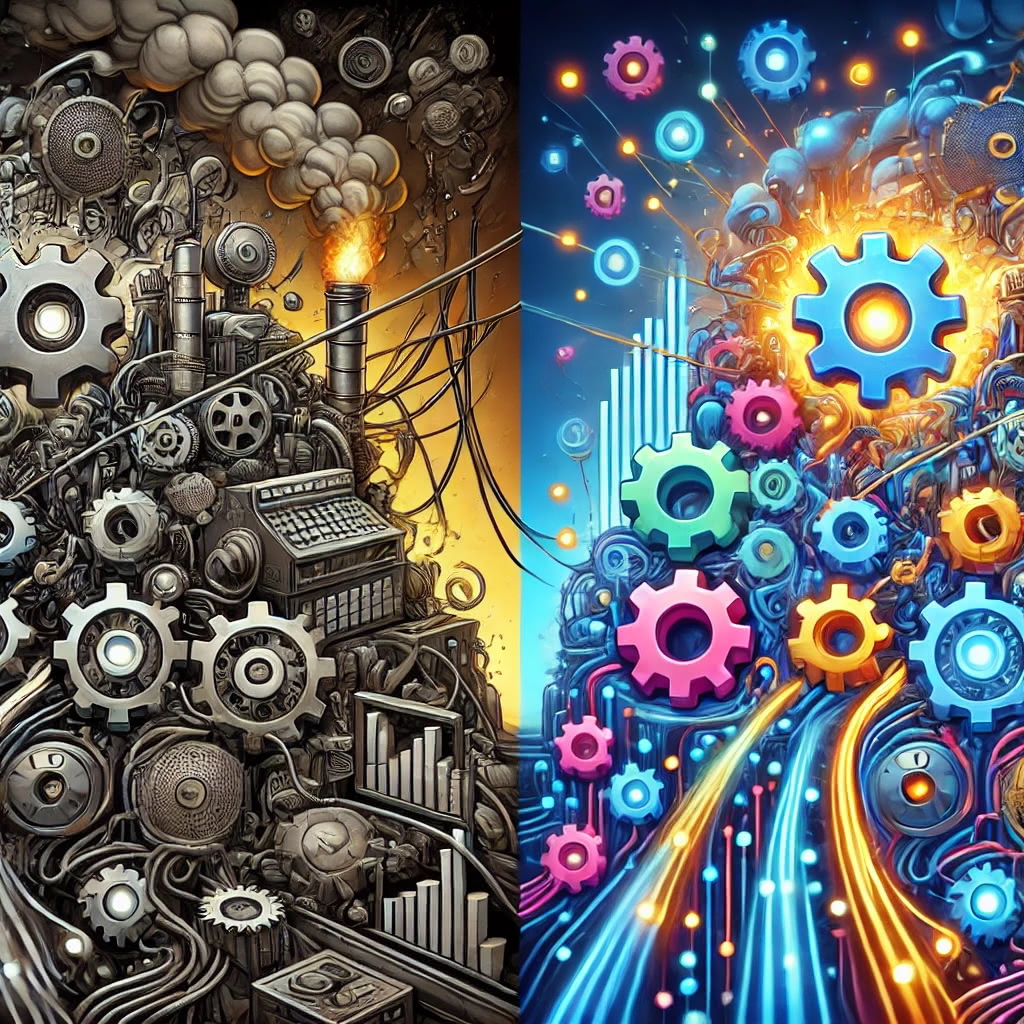27 Dec 2024 Reading time: 4 minutes A bit of a different type of post, today, but it should be interesting - especially for those of you in on the eastern seaboard.
I have been frequenting Ocean Casino Resort in Atlantic City for a while now, with friends, and this year for vacation I decided to do vacation with my wife there.
I want to write about it because I don’t think it gets enough credit for how awesome it is, even relative to other AC and Vegas resorts. I’ll also include some tips throughout the article here, you won’t wanna miss them - they’re good.
Casino

First off, the casino floor is awesome. I spent a decent amount of time here. While they do allow smoking, it is less smokey than other casinos I have been too (especially less than ones on cruise ships).
Tips
These two tips involve balancing gambling and getting free drinks on the floor for a long time. So if that isn’t your thing, don’t pay much attention.
- Stay away from the slots. These have really bad odds and you will be out of money the quickest.
- There are two roulette machines (and tons of tables with people running them). I like both, but the one machine, by the walkway near the middle and the sports book, is my favorite machine.
- You can bet a minimum $3/spin, but you can also bet $1/spin for a chance on the “jackpot chance”.
- Sometimes the jackpot chance is one number sometimes two. I hit this a decent amount which typically pays a 15-30 dollar bonus - but can hit a lot more in the small/medium/large jackpot (or whatever it’s called). I hit the small jackpot once, which was 70 dollars.
- On the floor, you can grab a decent amount of free drinks - maybe ~1 an hour. Playing a low risk roulette play with your minimum $3 bet and then the $1 jackpot chance can keep you playing all weekend for hours a day and getting free drinks.
- The absolute best way to get free drinks and lose the least amount of money is the video poker on the bar (specifically the sports book bar in the center).
- The bartenders are obviously way more attentive than the servers on the floors as they have less people to attend to and don’t have to walk across the floor and back over and over.
- I usually play Jacks or Better and can stay there for many hours with a lot of free drinks and lose less money than the drinks are worth. It’s amazing.
Pool
My wife spent a lot of time at the heated pool. It has an indoor and outside part - she gave it amazing reviews. It is also free if you’re staying there.

Food
Everywhere we ate was amazing. They have multiple casual and fine dining options. We had meals at most of the places here, but our favorite was our large fine dining meal at Ocean Steak:

We ordered the wagyu meatballs as the appetizer, porterhouse for two, & a loaded baked potato.
Everything was amazing (including the free bread they give, its wild). One hilarious point was that the baked potato was by far the largest potato I have ever seen:

Zhen Bang
A casual dining experience that is great and we enjoyed a bunch is Zhen Bang.

The fried rice there is amazing and is a hugeeee portion. Perfection!

Spa
While I did not go to the spa, my wife said it was awesome. She got the day pass and had a great time.
Other
There’s a lot of miscellaneous stuff that is great about Ocean. Specifically, it being right on the ocean is awesome. Obviously, during the winter it’s too cold for the ocean - but the views are amazing.


Also, during the summer when I went - me and my friends rented a cabana at another pool and it was a great experience - and splitting it between a few friends made it not horrifically expensive.
A great experience that we both loved. Highly recommend!
11 Dec 2024 Reading time: 1 minute This is Part 6 in a multipart series on nationalizing AI:

Conclusion
As I mentioned in the first part - we are facing a fork in the road. We can either maintain the status quo and let AI be privately owned, or nationalize it.
If we follow the nationalization plan I outlined in Part 1, as well - with oversight and shared ownership and direct distribution of the profits and benefits to the public; we can offset unemployment issues, not suffer the massive problems with having a corporation owning AI, and can efficiently move AI forward for our own national and societal interest.
On the other hand, allowing private corporations to maintain sole control of the most powerful technology ever created will result in unparalleled suffering and pose an existential threat to humanity.
It is imperative we nationalize AI as soon as possible.
10 Dec 2024 Reading time: 5 minutes This is Part 5 in a multipart series on nationalizing AI:

Superiority
Throughout history, moments of intense competition have driven humanity to achieve extraordinary feats, often under the shadow of immense pressure and high stakes. These races—whether against time, an adversary, or nature itself (often all three)—are marked by innovation, sacrifice, and moral complexity.
They reveal the lengths to which nations and individuals will go to gain an advantage or secure survival, even when the cost is extraordinary. Here are three such defining moments that changed the course of history.
The Space Race
On October 4, 1957, a crisp autumn evening, the Soviet Union sent shockwaves through the world, and through history, by launching Sputnik, the first artificial satellite. As its beeping signal echoed from orbit, the Space Race was born, a battle between superpowers to dominate the cosmos.
Four years later, in 1961, the Soviet Union’s Yuri Gagarin became the first human to leave Earth’s bounds, orbiting the planet aboard Vostok 1. His journey, lasting just 108 minutes, was a triumph for the Soviet Union and a humbling reminder to the United States of the stakes in this cosmic competition.
In 1962, President Kennedy inspired a nation and the world with his bold challenge: “We choose to go to the Moon.” This visionary declaration transformed the Space Race into a daring quest to push the boundaries of human achievement.
The race culminated on July 20, 1969, when Apollo 11 successfully landed on the Moon. As Neil Armstrong descended the ladder and declared, “That’s one small step for man, one giant leap for mankind,” the moment symbolized more than an American victory—it was a triumph for humanity.
The Space Race forever changed our understanding of exploration, turning the impossible into a reality and setting the stage for future journeys into the unknown.
Oppenheimer
On July 16, 1945, in the remote arid deserts of New Mexico, the world changed forever. Under the guidance of J. Robert Oppenheimer, the Manhattan Project successfully detonated the first atomic bomb in the Trinity test. As the fiery blast lit up the sky, Oppenheimer reflected on a line from Hindu scripture: “Now I am become Death, the destroyer of worlds.”
A theoretical physicist with a keen intellect, Oppenheimer led a team of brilliant scientists in a race against time during World War II. Their mission: to harness the atom’s power before Nazi Germany could. The result was a weapon of unimaginable destruction, marking both a triumph of human ingenuity and the dawn of a terrifying new era.
When atomic bombs were dropped on Hiroshima and Nagasaki, ending the war, Oppenheimer became a symbol of scientific achievement—and its moral complexity.
Enigma
During World War II, the Allies faced a deadly challenge: Nazi Germany’s Enigma machine, a cipher believed to be unbreakable. Decoding it would mean turning the tide of war, but the clock was ticking.
In 1940, Alan Turing and his team at Bletchley Park rose to the task. Through ingenuity and relentless effort, they built a revolutionary machine that unraveled Enigma’s secrets. Their success delivered critical intelligence, saving countless lives and shortening the war.
The race to break Enigma was a triumph of brilliance and determination, fought in silence and secrecy. It stands as a testament to the unseen heroes who shaped the course of history.
The Race to End All Races
All of the aforementioned events were born from intense rivalry, propelled by urgency, and achieved through groundbreaking innovation. They highlight humanity’s capacity to push boundaries under pressure, often at great cost, leaving legacies that reshaped the course of history. Notably, these were not privately run or owned efforts—they were fully centralized, publicly funded, and operated under governmental control to ensure their scope and impact could be effectively managed.
The AI superiority race is larger than all three of these, combined, times a trillion. This is it.
Such an entity would dictate the direction of humanity, able to directly and quickly reshape every aspect of life on Earth for all living beings.
This is the last race; there will be no others. Superintelligent AI will be humanity’s final innovation, and its control will determine our survival.
It being so critical to be first to achieve superintelligent AI, resource centralization is imperative. Notably, centralization was also a defining feature of the projects mentioned earlier. It’s obvious we are already investing a lot, federally, in AI already, but the vast majority of the talent and resources are currently in the private sector.
While no entity is perfect, the best choice is one accountable to the people through voting power.
I believe the case is clear - nationalization is necessary for the above reasons.
In the final post of mine, I will briefly recap my arguments and conclude this series on nationalizing AI: Nationalize AI - Part 6 - Conclusion
09 Dec 2024 Reading time: 3 minutes This is Part 4 in a multipart series on nationalizing AI:

Inefficient
Overall, the details here on how AI systems work are hand-wavy and explicitly high-level. In reality, it’s a minor point, but worth keeping in mind as I make generalizations here.
Markets, generally, are an excellent mechanism for allocating resources and driving innovation through competition. However, in this article, I argue that the unique characteristics and risks of AI make it an exception where market forces fall short of ensuring efficiency, equity, and safety.
The Current Landscape & Its Inefficiencies
There are really not many companies competing in building these very large systems, and much of their effort is duplicated. The models primarily use the same or similar datasets, techniques, and algorithms.
While duplication of effort is common across industries, in AI, it poses unique challenges:
Resource Intensity
Developing state-of-the-art AI models requires enormous computational resources, energy, and capital. This duplication wastes resources that could be used elsewhere. Not only could these resources be used in novel AI development, but they could also benefit other industries—or their conservation could help maintain reasonable pricing for others.
Not only this, the amount of resources required for each firm with an AI system is going up and accelerating very fast. This is especially true of energy (and therefore money), tomorrow’s AI systems will require massive upgrades to energy generation and likely the grid infrastructure. This is to say, while the duplicated resources are already incredibly intense - it will only get vastly worse.
Limited Competition
The high cost of developing these systems creates significant barriers for smaller players, consolidating control among a few major corporations.
Additionally, with similar datasets and techniques, most AI systems do not offer substantially different capabilities, meaning the duplication does little to advance the field.
Missed Opportunities for Collaboration
Instead of pooling efforts to address broader societal challenges, companies compete to slightly outpace each other with similar technologies.
You can see the rat race by simply looking up the AI benchmarks leader boards. Each company essentially strives only for marginal percentage improvements over the others in these benchmarks, without attempting to solve real world issues.
Why Nationalization Solves For This
Due to the unprecedented nature of AI—especially the high costs of developing these systems—and the lackluster competition in the industry, I contend that the current state of AI development is clearly failing to optimize AI for the public good. This represents a misallocation of resources that requires some form of government intervention.
A clearly defined and transparent public AI program removes a significant amount of the unnecessary massive duplication of resources. It also ensures that the developments and research is pointed in directions that are more aligned with solving massive societal issues that AI can and therefore should be helping to fix.
I’ve made the following point on each of the articles in the series so far - because I believe it to be true on each, and this one is no different; I believe these issues alone demonstrate the necessity of nationalization.
In the next article in the series, we will talk about why it’s important to be the first to control super intelligent AI: Nationalize AI - Part 5 - Superiority










